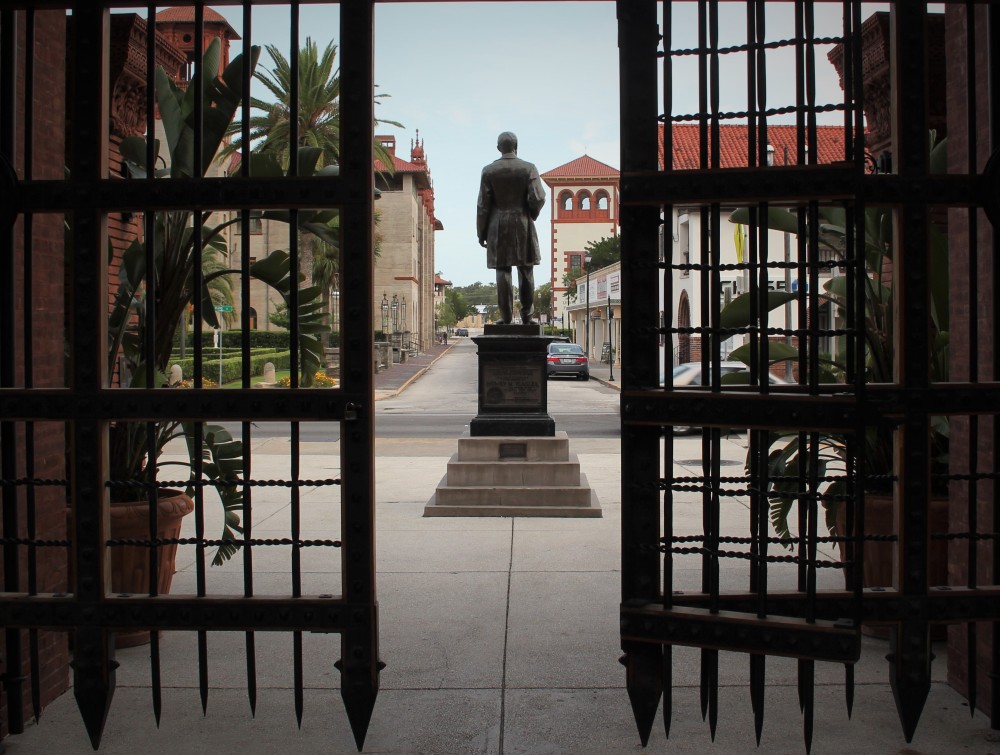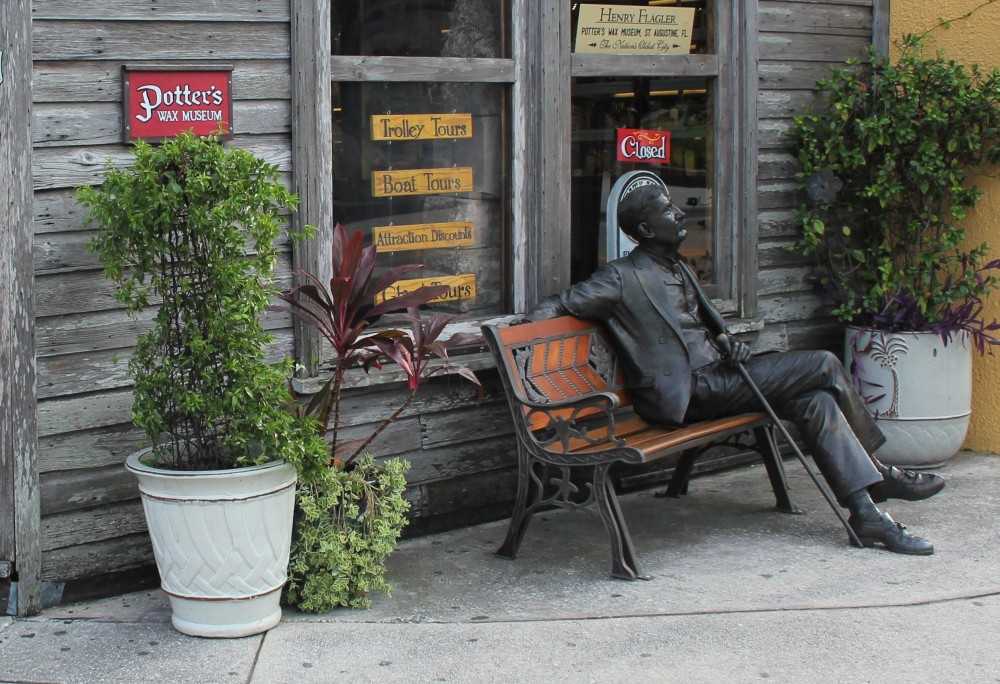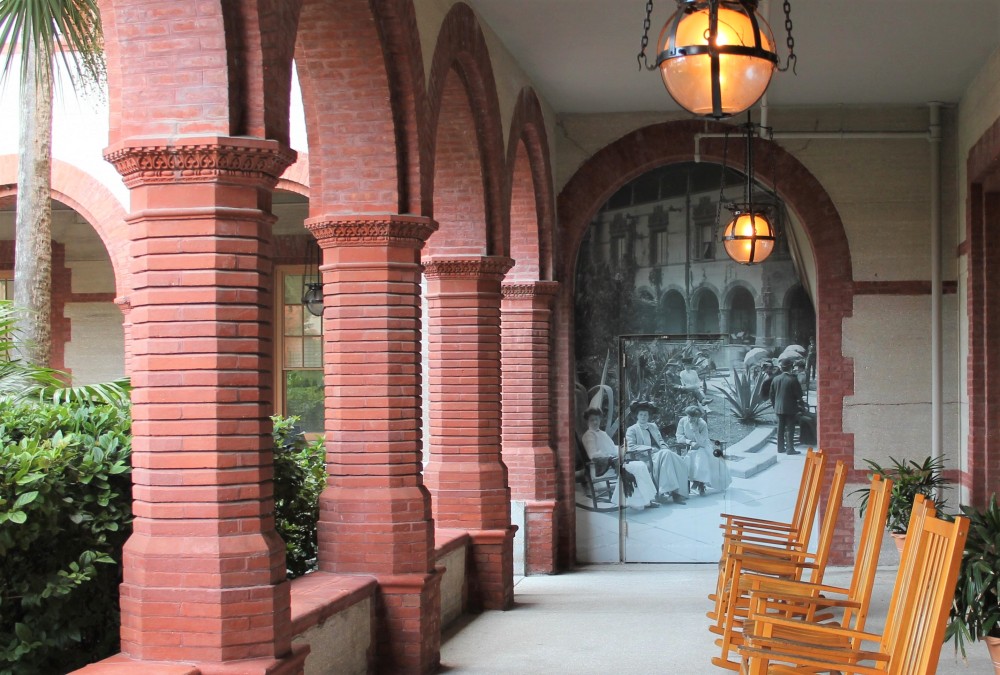
Alternately called cruel, philanthropic, pitiless and visionary in his lifetime, Henry Morrison Flagler (1830-1913) was a complicated man.
Though a hard worker, Flagler was widely recognized as a ruthless businessman. His business dealings, along with those of partner John D. Rockefeller’s, were laid out in painstaking detail by one bold muckraker of the era, Ida Tarbell, in “The History of the Standard Oil Company,” written in 1904.
In addition, Flagler’s family relationships were not without contradictions. He had three wives whom, by accounts, he treated with varying degrees of devotion and disregard. Tensions were also said to be great between Flagler and his son, Henry Harkness Flagler, reportedly, because Flagler Jr. dropped out of school and refused to follow his father into business. Yet, when Flagler’s daughter, Jennie Louise, died during childbirth, he spent $250,000 ($6.3 million in 2019) to build a church in her honor.[1]
For all the things Flagler might have meant to the people in his life, today, he is remembered as the Father of Modern-Day Florida.
Flagler’s role in reviving the city of St. Augustine is especially noteworthy — and duly noted. The city’s four-year liberal arts college bears the Flagler name, as does the city’s only hospital. More appropriately, and perhaps, poignantly, Flagler’s likeness proudly watches over the city in not just one, but two locations in downtown St. Augustine. A statue of Henry Flagler guards the Flagler College entrance on King Street, and in 2018, Potter’s Wax Museum unveiled a sculpture of Henry Flagler resting on a park bench outside the museum.

When Flagler arrived in St. Augustine, in 1881, he was still involved in the operations of Standard Oil, a company that he co-founded with friend and business magnate John D. Rockefeller. Though charmed by the city’s old Spanish architecture, the scent of oranges floating through the air and the colorful boats dotting the bayfront, Flagler found the accommodations and amenities dreadful.
With a vision of St. Augustine as a warm-weather playground for his wealthy friends up north, Flagler returned to St. Augustine in 1885 and began work on a new hotel. Originally, the cost to build the 540-room Ponce de Leon Hotel was estimated at $200,000; Flagler spent that amount several times over before construction was completed in 1887.
To design the hotel, Flagler turned to New York City architects John Carrere and Thomas Hastings. The young designers envisioned a luxury hotel built in the Spanish Renaissance style in keeping with the city’s Spanish architecture.
The Ponce de Leon, now Flagler College, boasted many firsts. It was the first hotel to be constructed entirely of poured concrete using local coquina stone. It was also one of the first buildings in the country to be wired for electricity from the outset with power supplied by DC generators installed by Flagler’s friend, Thomas Edison.
The interior was designed by Louis Comfort Tiffany and includes 79 stained glass windows, the largest collection in the world. In the rotunda and dining room, artist George Willoughby Maynard hand-painted an intricate mural. A decade later, he reproduced the “Exploration” series in the Library of Congress as a gift to the nation.

To provide entertainment for his guests and to promote St. Augustine through their paintings, Flagler hosted a series of artists. Through Flagler’s artist studio, the city became known as an artist colony — a reputation it maintains today with more than 30 art galleries in the downtown area.
As St. Augustine’s reputation grew, Flagler constructed a second hotel, the Alcazar, to handle the overflow. Now the Lightner Museum, the Alcazar Hotel was at the height of its popularity in the 1890s. In the Alcazar, Flagler had an opportunity to add some diversions he hadn’t considered when constructing the Ponce de Leon.

Though more than 25,000 guests visited the Alcazar, its facilities were used by all of Flagler’s guests. The hotel included the world’s largest indoor swimming pool at the time, a grand ballroom, sulfur baths, a steam room, a massage parlor, a gymnasium, a bowling alley, archery ranges, tennis courts and a bicycle academy.
By 1889, Flagler’s vision of making St. Augustine the new “American Riviera” was well underway, but his plans for the east coast of Florida had just begun.
Developing the Florida East Coast Railway helped Flagler bring supplies and guests to his swanky hotels, but it would also spark a new vision — one that would take Flagler all the way to Key West.
But that’s a story for another day.
[1] This is all second-hand information, of course. For an in-depth look at Henry Flagler, read “Henry Flagler: The Astonishing Life and Times of the Visionary Robber Baron Who Founded Florida” by David Leon Chandler and “Mr. Flagler’s St. Augustine” by Thomas Graham.